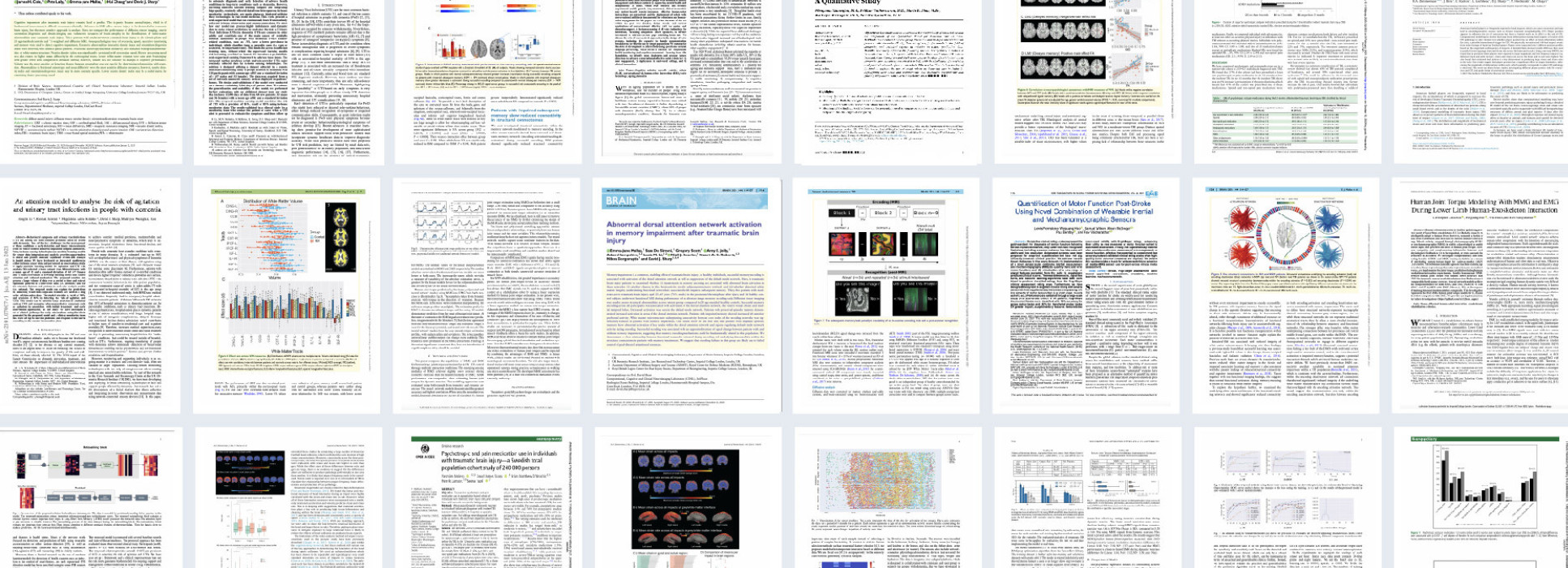Publications

Results
- Showing results for:
- Reset all filters
Search results
-
Journal articleRowan AG, May P, Badhan A, et al., 2021,
Optimized protocol for a quantitative SARS-CoV-2 duplex RT-qPCR assay with internal human sample sufficiency control.
, Journal of Virological Methods, Vol: 294, Pages: 1-7, ISSN: 0166-0934There is growing evidence that measurement of SARS-CoV-2 viral copy number can inform clinical and public health management of SARS-CoV-2 carriers and COVID-19 patients. Here we show that quantification of SARS-CoV-2 is feasible in a clinical setting, using a duplex RT-qPCR assay which targets both the E gene (Charité assay) and a human RNA transcript, RNase P (CDC assay) as an internal sample sufficiency control. Samples in which RNase P is not amplified indicate that sample degradation has occurred, PCR inhibitors are present, RNA extraction has failed or swabbing technique was insufficient. This important internal control reveals that 2.4% of nasopharyngeal swabs (15/618 samples) are inadequate for SARS-CoV-2 testing which, if not identified, could result in false negative results. We show that our assay is linear across at least 7 logs and is highly reproducible, enabling the conversion of Cq values to viral copy numbers using a standard curve. Furthermore, the SARS-CoV-2 copy number was independent of the RNase P copy number indicating that the per-swab viral copy number is not dependent on sampling- further allowing comparisons between samples. The ability to quantify SARS-CoV-2 viral copy number will provide an important opportunity for viral burden-guided public health and clinical decision making.
-
Journal articleRezvani R, Barnaghi P, Enshaeifar S, 2021,
A New Pattern Representation Method for Time-Series Data
, IEEE TRANSACTIONS ON KNOWLEDGE AND DATA ENGINEERING, Vol: 33, Pages: 2818-2832, ISSN: 1041-4347- Author Web Link
- Cite
- Citations: 10
-
Journal articleQiu M, Thuraisingham B, Daneshmand M, et al., 2021,
Guest Editorial: Special Issue on Robustness and Efficiency in the Convergence of Artificial Intelligence and IoT
, IEEE INTERNET OF THINGS JOURNAL, Vol: 8, Pages: 9460-9462, ISSN: 2327-4662- Author Web Link
- Cite
- Citations: 2
-
Conference paperChen Z, Bannon A, Rapeaux A, et al., 2021,
Towards robust, unobtrusive sensing of respiration using UWB impulse Radar for the care of people living with dementia
, 10th International IEEE-EMBS Conference on Neural Engineering (NER), Publisher: IEEE, Pages: 866-871, ISSN: 1948-3546The unobtrusive monitoring of vital signals and behaviour can be used to gather intelligence to support the care of people living with dementia. This can provide insights into the person's wellbeing and the neurogenerative process, as well as enable them to continue to live safely at home, thereby improving their quality of life. Within this context, this study investigated the deployability of non-contact respiration rate (RR) measurement based on an Ultra-Wideband (UWB) radar System-on-Chip (SoC). An algorithm was developed to simultaneously and continuously extract the respiration signal, together with the confidence level of the respiration signal and the target position, without needing any prior calibration. The radar-measured RR results were compared to the RR results obtained from a ground truth measure based on the breathing sound, and the error rates were within 8% with a mean value of 2.5%. The target localisation results match to the radar-to-chest distances with a mean error rate of 5.8%. The tested measurement range was up to 5m. The results suggest that the algorithm could perform sufficiently well in non-contact stationary respiration rate detection.
-
Journal articleTiersen F, Batey P, Harrison MJC, et al., 2021,
Smart home sensing and monitoring in households with dementia: user-centered design approach
, JMIR Aging, Vol: 4, Pages: 1-20, ISSN: 2561-7605Background:As life expectancy grows, so do the challenges of caring for an ageing population. Older adults, including people with dementia, want to live independently and feel in control of their lives for as long as possible. Assistive technologies powered by Artificial Intelligence and Internet of Things devices are being proposed to provide living environments that support the users’ safety, psychological, and medical needs through remote monitoring and interventions.Objective:This study investigates the functional, psychosocial, and environmental needs of people living with dementia, their caregivers, clinicians, and health and social care service providers towards the design and implementation of smart home systems.Methods:We used an iterative user-centered design approach comprising nine sub-studies. First, semi-structured interviews (N = 9 people with dementia, 9 caregivers, 10 academic and clinical staff), ethnographic observations in clinics (N = 10 people with dementia, 10 caregivers, 3 clinical monitoring team members), and workshops (N = 35 pairs of people with dementia and caregivers, 12 health and social care clinicians) were conducted to define the needs of people with dementia, home caregivers and professional stakeholders in both daily activities and technology-specific interactions. Then, the spectrum of needs identified was represented via patient-caregiver personas and discussed with stakeholders in a workshop (N = 14 occupational therapists, 4 National Health Service pathway directors, 6 researchers in occupational therapy, neuropsychiatry and engineering) and two focus groups with managers of healthcare services (N = 8), eliciting opportunities for innovative care technologies and public health strategies. Finally, these opportunities were discussed in semi-structured interviews with participants of a smart home trial involving environmental sensors, physiological measurement devices, smart watches, and tablet-based chatbots and cognitive
This data is extracted from the Web of Science and reproduced under a licence from Thomson Reuters. You may not copy or re-distribute this data in whole or in part without the written consent of the Science business of Thomson Reuters.
Awards
- Finalist: Best Paper - IEEE Transactions on Mechatronics (awarded June 2021)
- Finalist: IEEE Transactions on Mechatronics; 1 of 5 finalists for Best Paper in Journal
- Winner: UK Institute of Mechanical Engineers (IMECHE) Healthcare Technologies Early Career Award (awarded June 2021): Awarded to Maria Lima (UKDRI CR&T PhD candidate)
- Winner: Sony Start-up Acceleration Program (awarded May 2021): Spinout company Serg Tech awarded (1 of 4 companies in all of Europe) a place in Sony corporation start-up boot camp
- “An Extended Complementary Filter for Full-Body MARG Orientation Estimation” (CR&T authors: S Wilson, R Vaidyanathan)


